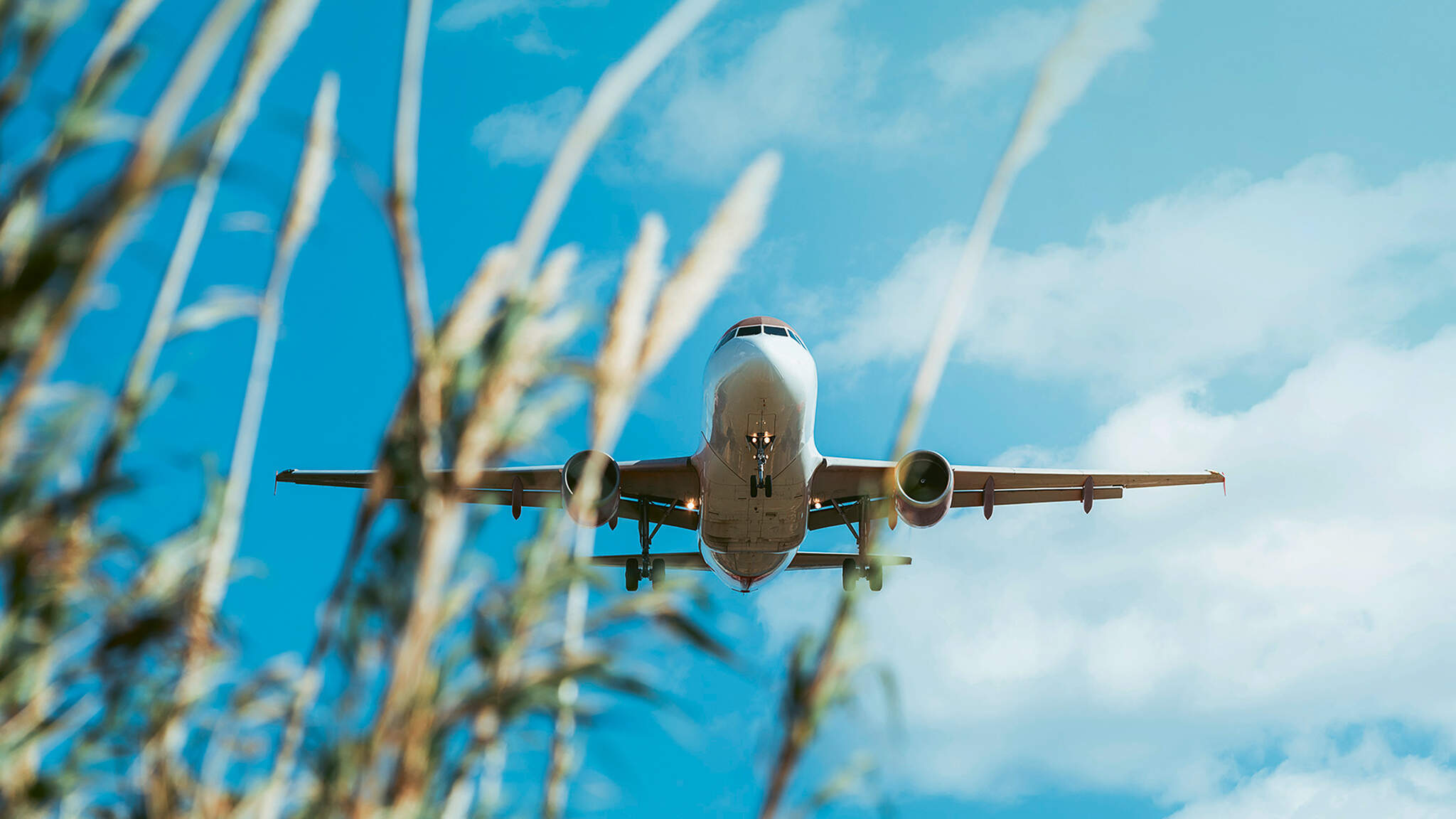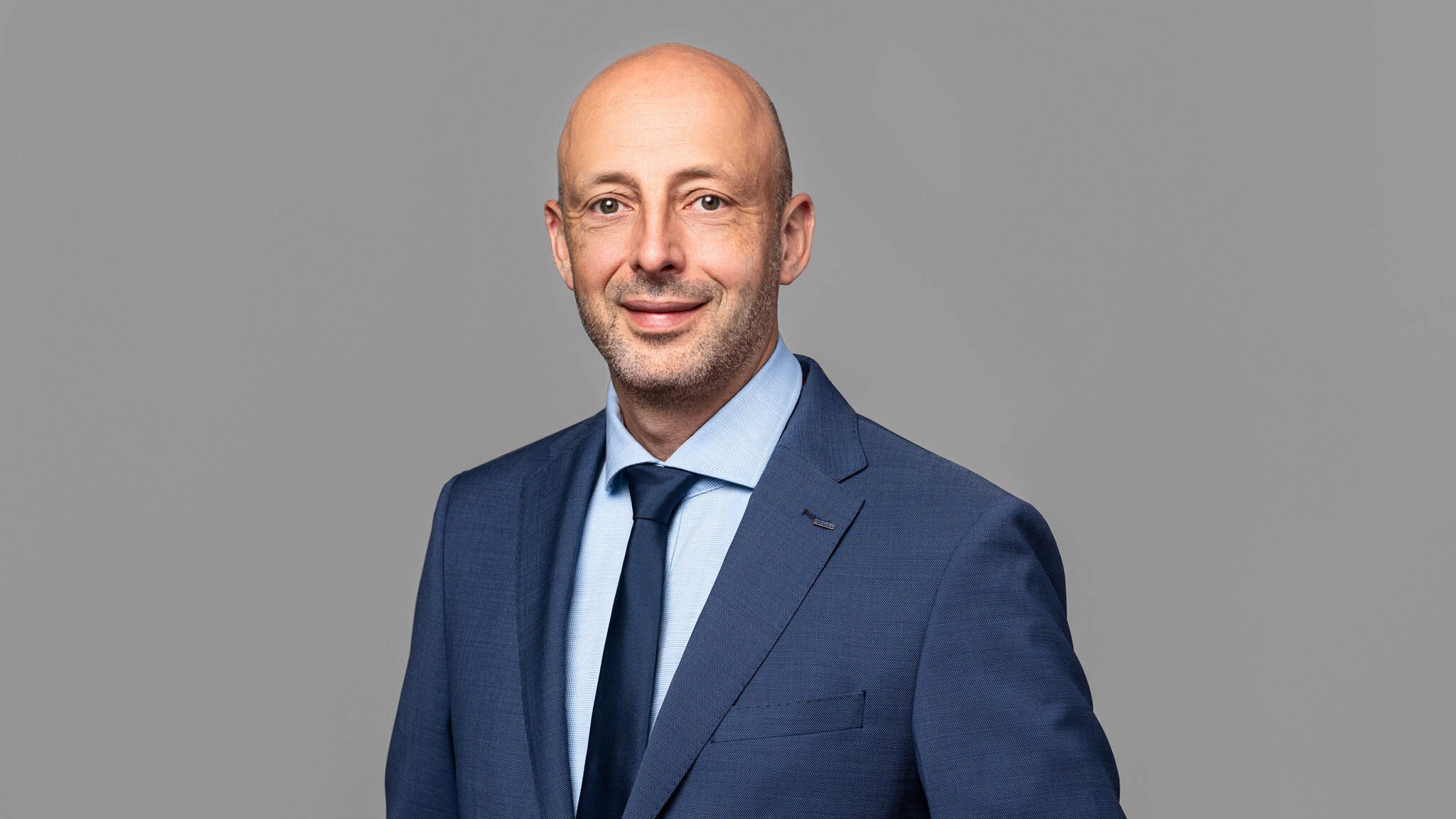Emissions-free flight - A look at future technologies
Sustainable aviation fuel (SAF) is currently the industry’s best hope for achieving a significant reduction in emissions of CO₂ and other greenhouse gases. Now everyone can be part of this promising technology through Book & Claim.

Sustainable aviation fuel (SAF) is a blanket term for climate-friendly aviation kerosene, which can generally be used to power today’s aircraft without compromising on performance. Using SAF has the potential to reduce an aircraft’s operational net greenhouse gas (GHG) emissions to virtually zero. Alongside efficiency measures, this makes SAF one of the aviation industry’s key technologies for achieving the goal of net zero emissions from long-haul flights. While this prize is still a long way off, SAF is already being used on certain routes—and the heat is on to push research and development activities in this area.
What makes SAF fundamentally climate-friendly is the fact that the fuel’s production process can be offset against the inevitable GHG emissions from its combustion in jet engines. SAF is manufactured using synthetic or plant-based inputs that themselves have removed carbon dioxide from the atmosphere by way of artificial or biological processes. The amount of CO₂ already removed in this way constitutes the GHG reduction compared to using conventional fossil kerosene. This establishes what’s known as a closed carbon loop.
Current and future CO₂ savings depend on an array of technological aspects. For technical reasons, most of the SAFs currently approved for the majority of aircraft are permitted to account for no more than 50 percent in a mix with conventional kerosene. This cuts an aircraft’s potential GHG savings in half. Research projects and tests are underway to create better admixture ratios to enable higher proportions of SAF in the next few years.
Fuel from waste
Today, the most commonly used SAFs are based on vegetable oils, waste, and lipids and are converted into hydrocarbons by way of a catalytic reaction with the addition of hydrogen. In terms of their manufacture and basic ingredients, these hydroprocessed esters and fatty acids (HEFA) are similar to hydrogenated vegetable oils (HVO), which can be used as biodiesel in trucks and locomotives. What’s relevant from a sustainability point of view is to stick as closely as possible to the specifications for advanced biofuels as laid out in the European Union’s Renewable Energy Directive (RED II). This means replacing oils from food crops mainly with waste vegetable oils as well as animal and plant waste. Europe’s leading SAF manufacturers like Neste stress that only this kind of biomass should be used. Since residual GHG emissions are an inevitable byproduct of biomass production, HEFA SAF has the potential to reduce GHG emissions by between 50 and 80 percent compared with conventional kerosene, provided that 100 percent SAF usage be permitted. Not factoring in government subsidies, the cost of each metric ton of carbon dioxide equivalent (CO₂e) avoided by using this SAF kerosene would be between EUR 800 and 1,000.
The future is likely to see an upswing in the use of advanced processes such as biomass to liquid (BtL) to turn biomass into SAF. Here, the GHG savings potential is between 60 and 90 percent.
The future is likely to see an upswing in the use of advanced processes such as biomass to liquid (BtL) to turn biomass into SAF. In particular, this would see various waste materials from the wood and forestry industries used to produce aviation kerosene. Here, the GHG savings potential is between 60 and 90 percent. Since these processes are still around 25 percent more expensive than HEFA, their use is rare. But given the amount of SAF that will be required in the future, this production method is credited with considerable potential.

Legal requirements
In addition to biomass, there are also plans to use electricity from renewables to produce SAF. Power to liquid (PtL) is a process that uses electrolysis to convert electricity into hydrogen, which is then mixed with CO₂ to produce hydrocarbon chains with the properties of kerosene. The CO₂ is either sourced from biomass or drawn directly from the atmosphere using technical means. PtL technology leads to a GHG reduction of almost 100 percent during flight. PtL SAF is currently much more expensive than HEFA SAF and is produced only at a few small-scale plants.
EU legislation provides for an incremental increase over the coming years in the proportion of SAFs used when aircraft refuel at European airports. This will up the proportion from today’s less than 1 percent to 2 percent by 2025, followed by a series of increases to around 63 percent by 2050. This is stipulated in the draft ReFuelEU Aviation regulation. The proportion of PtL in the SAF portion of admixes should reach around 0.7 percent by 2030, around 8 percent by 2040, and 28 percent by 2050. In other words, as can be seen from the EU’s target specifications, SAF won’t make up a significant proportion of the fuel used in European aviation until 2040. The plan is to use approaches based on biomass (BtL) alongside those based on electricity (PtL).
Several airlines and freight forwarders already offer companies and private individuals wishing to play a part in increasing the proportion of SAF used in aviation the option of booking SAF-powered flights for an extra charge. For economic and organizational reasons, SAF is not always used in the specific aircraft the freight or passenger flies on. Instead, the purchase of SAF certificates compels the airline or airport to use SAF in its refueling system. A recognized verification procedure is in place to ensure that the GHG-saving effect actually takes place and is credited to only one airline and one customer. This Book & Claim approach makes it possible for anyone to make a valuable contribution to technological change and climate action in aviation. In terms of its basic principle, this approach, which is also known as “insetting,” is comparable to the market for renewable electricity and the trade in proofs of origin. DACHSER, too, will be taking the Book & Claim approach when it launches its first SAF projects together with customers in 2023.
Andre Kranke, Head of Corporate Research & Development
